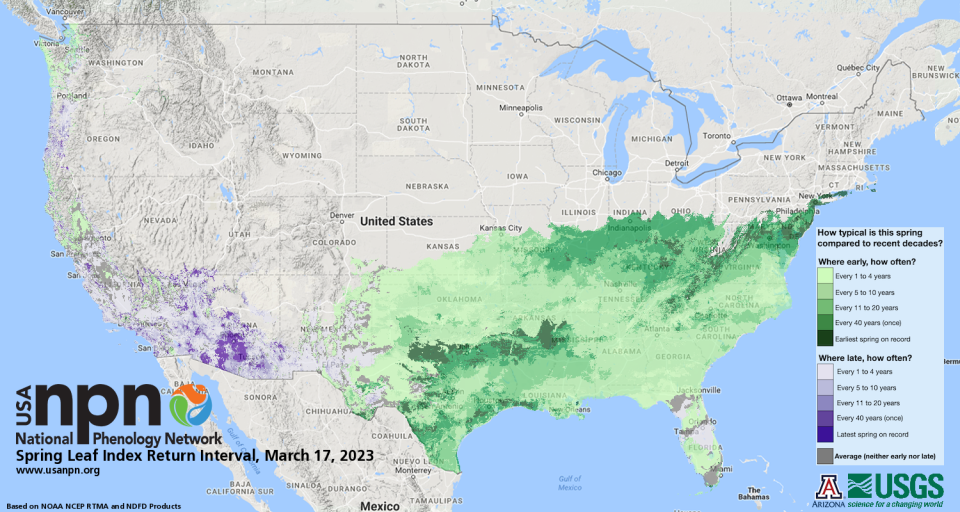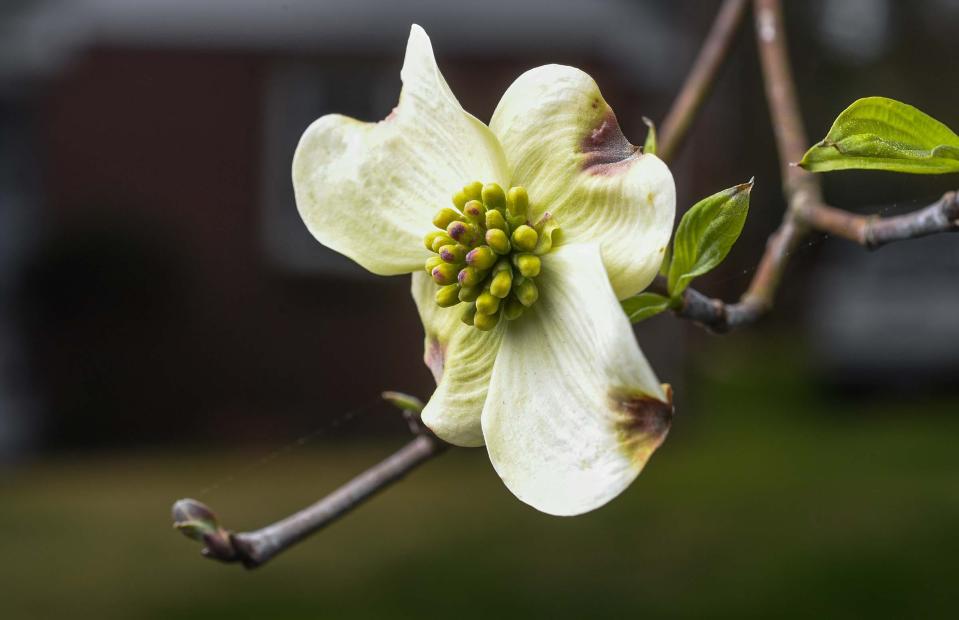Spring arriving earlier than ever in North Jersey, and so are pollen and allergies
Spring is hitting parts of North Jersey earlier than ever recorded, according to the National Phenology Network's spring leaf index. Allergy season won't be far behind.
"The bottom line is: Spring in the Northeast is bad," said John Oppenheimer, the director of clinical research at Pulmonary and Allergy Associates at Morristown Medical Center. "New Jersey has a really big springtime season. Avoiding it is next to impossible."
The AccuWeather 2023 spring allergy forecast, released last week, established a moderate outlook for the tri-state region. The timing is nonetheless extreme.

Spring comes earlier to North Jersey
AccuWeather Allergy Senior Meteorologist Alan Reppert, who led the forecast, said the early onset of spring in the Northeast is expected to bring an early start to the tree pollen season — and consequently allergy season.
Roughly one in four Americans have seasonal allergies, according to Centers for Disease Control and Prevention estimates, with women likely to suffer the effects more than men.
What is hay fever?
Sneezing, runny nose and congestion, the symptoms of hay fever, are all common reactions to allergens such as pollen when the human immune system recognizes them as a threat. The process, called allergic rhinitis, is caused by inflammation of the nasal membranes, Oppenheimer said. National Health Interview Survey data from 2021 shows that 29.9% of women suffer from it, compared with 21.1% of men.

"It starts mostly in childhood, but an adult can start getting seasonal allergies too," said Catherine Monteleone, an allergist with Robert Wood Johnson University Hospital. "We are seeing more of that because pollen counts with climate change have become higher and the seasons are growing longer."
Rising temperatures mean more pollen
A study published by the Proceedings of the National Academy of Sciences in 2021 found that rising temperatures are boosting pollen loads in the United States. The study, which examined trends across North America from 1990 to 2018, found that frost-free days are increasing and growing seasons are lengthening. The trends were the most pronounced in the Midwest and Northwest. However, the Northeast was not immune.

Expect normal pollen levels this spring
Despite the early start to the growing season this spring, Reppert said, lower-than-average temperatures in the Northeast should lead to normal pollen levels this spring.
The same goes for grass pollen in late spring to early summer. Although Reppert predicted surging grass pollen levels in the Eastern states from an expected wet and warm period, he said a forecast surge in cooler temperatures and added moisture during the second half of summer should keep levels closer to normal in the Northeast.
The good news ends there.
Get ready for high weed pollen levels this fall
Reppert said higher-than-normal temperatures and moisture levels should lead to significant weed pollen levels throughout the East Coast later in 2023.
Monteleone said allergy sufferers in the region should get ahead of the problem. Start to take allergy medications before the pollen loads become airborne. Oppenheimer said many preventive medicines can be found over the counter, but he still recommended consulting with a doctor about which one is best.
"We're often calling upon medicine that may not be best for the symptoms we're having," he said. "If you know you're bothered every spring, you'd really rather do it before than after the car accident, so to speak."
The biology of pollination
As winter fades, trees produce buds that open to begin pollination. From roughly February to May, trees produce pollen. In April, grass pollen typically arrives. Then, from August to November, ragweed and many other weeds tend to release their pollen.
According to Monteleone, it's also good practice to keep an eye on reports regarding pollen counts. Local television stations often include them with weather forecasts on news programs. The National Allergy Bureau's online pollen map is another good resource, she said.
A few more tips
Go out later in the day, when pollen counts are low.
Wear sunglasses to keep pollen out of your eyes.
Have separate clothes and shoes for indoor and outdoor use.
Keep your home's windows closed.
Shower after spending time outdoors.
Wear a hat if you don't plan to wash your hair.
Avoid drying clothes and linens on an outdoor line.
Oppenheimer said to keep your air conditioner on and your windows closed when pollen counts are high if you can, but seek a preventive mediation. Don't shutter yourself in the house.
"You can't avoid the outside, nor should you want to," he said. "We wait all year for the spring and summer."
This article originally appeared on NorthJersey.com: Get ready: NJ allergy season is here as spring arrives early

